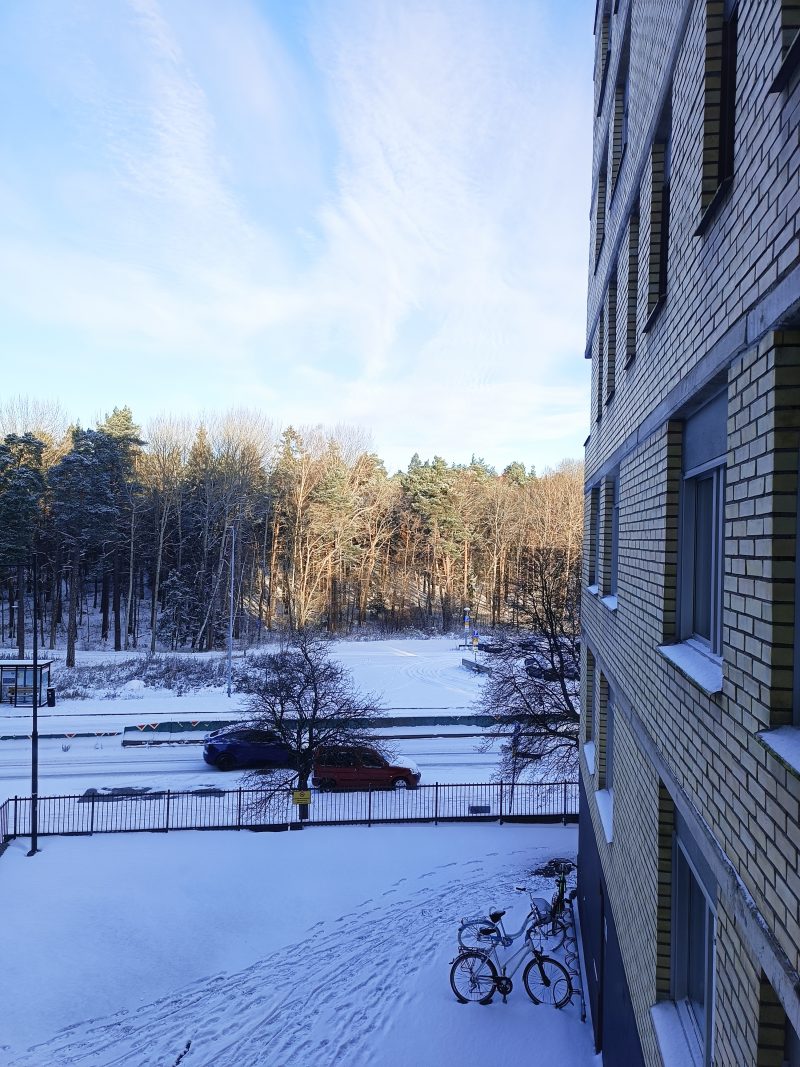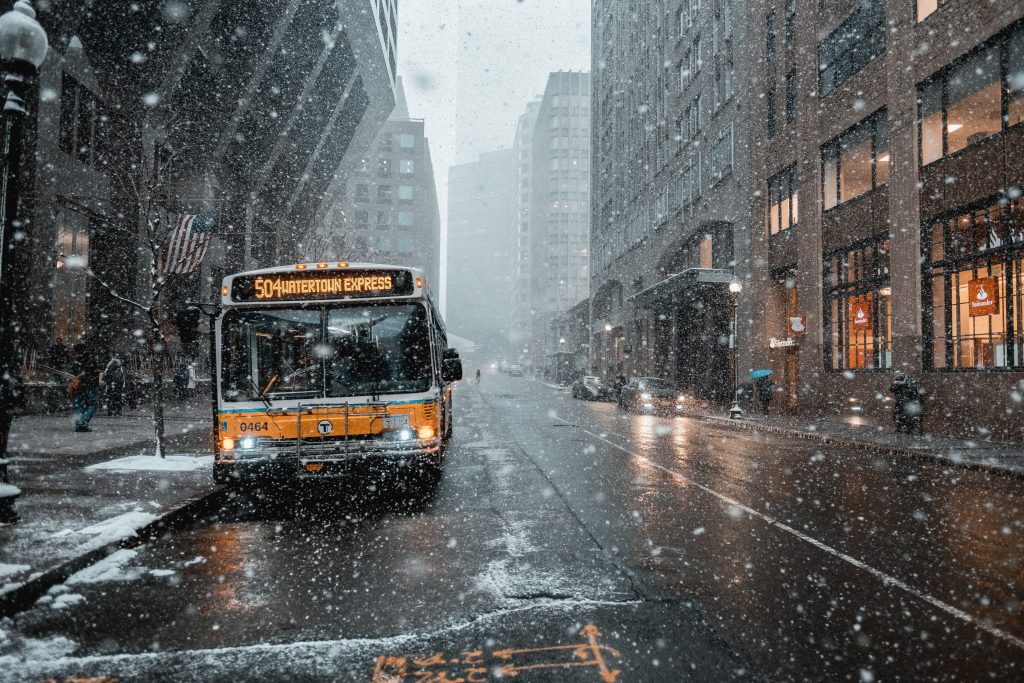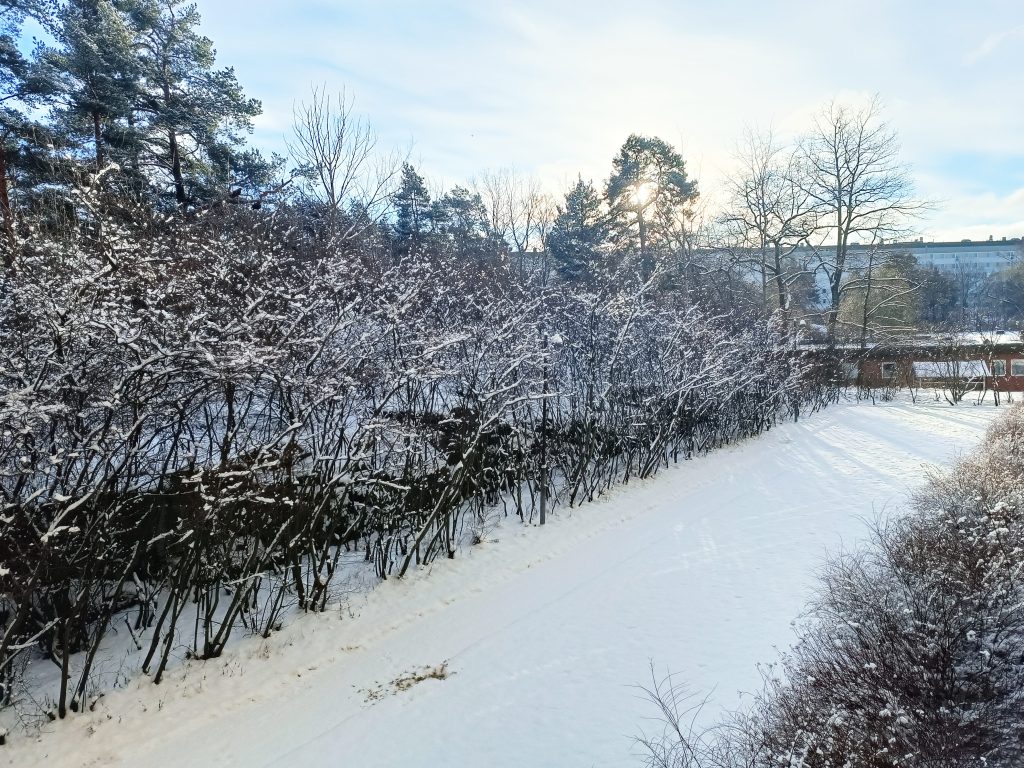
Practical tips for Swedish winters
No, I’m not going to tell you to dress warm (you’ll do it if you have even half a functional brain-cell). As an international student in Sweden, who comes from a country with a more tropical climate, I have picked up some tips and tricks when it comes to snow and the problems it brings. Don’t get me wrong, Sweden is gorgeous when it’s carpeted in fluffy white snow, and there are 101 things you can do to level up your winter game. However, when the rose-coloured glasses eventually come off, it becomes apparent how important it is to know how to navigate the winters as a student in Sweden.
Waterproof everything
Especially your backpack, coat, and shoes.
While it is important to be smart with how you layer your clothes, your carefully thought-out outfit will go for a toss if you don’t wear a waterproof jacket on top of it. If you have classes while it’s snowing- and chances are that you will- an insulated and waterproof jacket will not only keep you warm, but will also prevent your clothes from getting wet.
If you’re a student at KI, you probably have the KI backpack from the Introduction Week. Use it. Not only does it have an unbelievable amount of compartments (I discovered a new one A YEAR after I started using it), it’s also waterproof. If your regular bag does not protect against water, 15 minutes in snow is all it’s going to take for all its contents to get ruined.
Inches of pristine, fluffy white snow is fun. But you know what isn’t? Wet socks. Do yourself a favour and do one of these two things:
- Buy waterproof shoes/boots. They can be a bit pricey, admittedly, but be on the look-out for discounts. Use the Mecenat app, or check winter sales, Black Week sales, or just individual offers that stores have. I got my boots from din sko (literally translates to “your shoe” in Swedish, and it took me entirely too long to figure that out) when they were 50% off. I still get compliments on them after having worn them almost every single day for a whole year.
- Get a waterproofing spray for your shoes. I am not sure how useful those are, and I do recommend investing in waterproof shoes instead. But if push comes to shove, I’ve heard that they work fine (maybe more so on shoes that aren’t made of cloth, eg. canvas shoes).

SL
The SL app is going to be your best friend during bad weather. Commuter trains and buses can many times get delayed or cancelled due to heavy snow, which can throw a wet blanket on all your plans. To avoid getting stranded, keep back-up options ready. You can do this by:
- Checking the traffic information for your preferred mode of transport before you leave. I still forget to do this sometimes and the reality check is not fun. The app is generally well updated with information on timings, route disruptions, and cancellations. Alternatively, Google Maps also keeps the timings updated, in case you’d like to do a double-check (recommended).
- Be aware of alternative routes. I talk more about this in another blog (shameless self-promo), but in essence, there are almost always more than 1 ways to get from point A to point B in Stockholm. One way might be shorter than another, but in moments of crisis, beggars can’t be choosers. Check the SL app, and be aware of your options before stepping outdoors.

Spatial awareness
Be aware of your surroundings. This holds true regardless of where you are in the world, but here’s what I mean when it comes to snow:
- Ice: Ankle-deep soft snow is one thing, slippery ice is another. This is generally observed after light snowfall. When the amount of snow isn’t large enough to pile up, but isn’t small enough to be absorbed into the ground. There is thin layer of snow on the ground which starts to melt, but then freezes because of the weather. This leads to icy roads. Unless you have suitable shoes/soles to confidently walk on such areas, I would advise you to exercise extreme caution. Ice makes the ground slippery and if you aren’t careful enough, you can sustain serious injuries. So, watch where you walk.
- Trees: Obviously don’t walk into any, but that’s not the point I want to make. After heavy snowfall, a lot of snow gets deposited on branches of trees. From afar, it looks beautiful. However, if you are walking on a path lined with such trees, keep an eye out at all times. Often, when the amount of snow on a branch becomes much too heavy, it can result in the whole branch falling down. It will obviously not be a fun situation to find yourself in, so again, watch where you walk.

Winters in Sweden are magical and beautiful, no doubt. But there can be no good without any “this is not fun”. It is important that you stay protected and aware while you take in the fairytale-like Christmas and New Year spirit that winters bring to Sweden. With that, thank you so much for reading this far. If you have any questions, you know where to find me.

Naomi- Biomedicine (MSc)
My name is Naomi, and I am from India. I am a master’s student in Biomedicine. I have always been drawn towards research and knew early on that a career built around it was the one for me. So as a result, here I am! I enjoy spending time with my friends and exploring the city with them (though the introvert in me also loves some alone time). I hope I can be of some help with my blogs!

1 comments